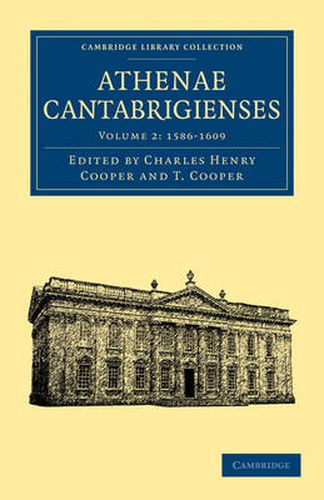Readings Newsletter
Become a Readings Member to make your shopping experience even easier.
Sign in or sign up for free!
You’re not far away from qualifying for FREE standard shipping within Australia
You’ve qualified for FREE standard shipping within Australia
The cart is loading…






The Athenae Cantabrigienses was the most ambitious of several large writing projects undertaken by Charles Henry Cooper, a keen historian, successful lawyer and town clerk of Cambridge in the mid-nineteenth century. He enlisted the help of his elder son, Thompson Cooper, for this book, a collection of carefully researched biographies of distinguished figures with Cambridge connections, inspired by Anthony Wood’s Athenae Oxonienses (1692). Two volumes were published during Cooper Senior’s lifetime, but only 60 pages of the third volume (ending in 1611) appeared in print, and he died leaving an enormous quantity of notes. Even in its incomplete state, the work contains about seven thousand biographies; their subjects include clergymen, military commanders, judges, artists, scholars and benefactors of the University. Volume 2, originally published in 1861, covers the period 1586-1609.
$9.00 standard shipping within Australia
FREE standard shipping within Australia for orders over $100.00
Express & International shipping calculated at checkout
The Athenae Cantabrigienses was the most ambitious of several large writing projects undertaken by Charles Henry Cooper, a keen historian, successful lawyer and town clerk of Cambridge in the mid-nineteenth century. He enlisted the help of his elder son, Thompson Cooper, for this book, a collection of carefully researched biographies of distinguished figures with Cambridge connections, inspired by Anthony Wood’s Athenae Oxonienses (1692). Two volumes were published during Cooper Senior’s lifetime, but only 60 pages of the third volume (ending in 1611) appeared in print, and he died leaving an enormous quantity of notes. Even in its incomplete state, the work contains about seven thousand biographies; their subjects include clergymen, military commanders, judges, artists, scholars and benefactors of the University. Volume 2, originally published in 1861, covers the period 1586-1609.